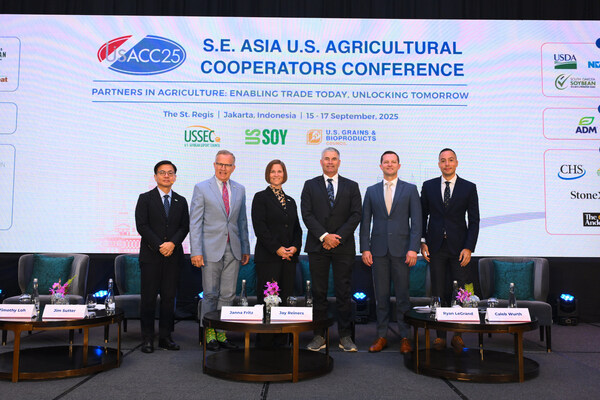Health
U.S. Soy Conference in Jakarta Strengthens Trade with Southeast Asia

A significant gathering of agricultural leaders marked the S.E. Asia U.S. Agricultural Cooperators Conference in Jakarta, Indonesia, from September 15 to 17, 2025. Over 400 participants from more than 20 countries convened to discuss sustainable growth and shared goals in food security. The event, co-organized by the U.S. Soybean Export Council (USSEC) and the U.S. Grains & BioProducts Council, emphasized the theme “Enabling Trade Today, Unlocking Tomorrow,” focusing on enhancing global trade and building resilient supply chains.
Trade Opportunities and Regional Demand
The conference highlighted Southeast Asia’s vital role in U.S. agricultural exports, particularly in the soybean sector. In the Marketing Year 2023/24, the region imported approximately 9.08 million metric tons of whole soybeans and 20.89 million metric tons of soybean meal. This strong demand is driven by the food and feed sectors, particularly within Indonesia, which is the largest importer of U.S. soybeans for food use in Southeast Asia.
Timothy Loh, USSEC Regional Director for Southeast Asia & Oceania, noted the region’s importance, saying, “Southeast Asia continues to be a key region of growth for U.S. Soy, driven by rising demand, a growing middle class, and expanding protein consumption.” The need for soybeans is primarily fueled by traditional food preferences, such as tempe and tofu, as well as rising protein needs in the feed sector.
Collaboration and Future Strategies
Throughout the conference, participants engaged in business-to-business networking, keynote addresses, and panel discussions covering crucial topics like logistics, market access, and sustainability. The dialogue reinforced the necessity of long-term collaboration between U.S. Soy producers and Southeast Asian partners to enhance supply reliability and unlock mutual value.
“Data, technology, and farmer-led innovation are shaping the future of agriculture,” said Jim Sutter, USSEC CEO, during a leadership discussion.
Sutter and Janna Fritz, USSEC Chair, stressed the unique advantages of U.S. Soy, including its low carbon footprint and commitment to sustainability. They highlighted the importance of engaging with customers to understand evolving market needs better. As Southeast Asia’s demand for high-quality protein rises, ensuring secure and sustainable supply chains becomes increasingly critical.
The conference served as a platform to strengthen partnerships across the agricultural supply chain, bringing together producers, exporters, buyers, and government leaders. This collaborative effort aims to shape a more resilient future for global agriculture while addressing the challenges of an evolving market.
The U.S. Soybean Export Council plays a pivotal role in promoting U.S. Soy for human consumption, aquaculture, and livestock feed in 93 countries. Funded by the soy checkoff, USDA Foreign Agricultural Service matching funds, and industry contributions, USSEC is dedicated to enhancing market access and preference for U.S. agricultural products. For more information, visit ussec.org.
-

 Lifestyle4 months ago
Lifestyle4 months agoHumanism Camp Engages 250 Youths in Summer Fest 2025
-

 Business5 months ago
Business5 months agoKenvue Dismisses CEO Thibaut Mongon as Strategic Review Advances
-

 Sports4 months ago
Sports4 months agoDe Minaur Triumphs at Washington Open After Thrilling Comeback
-

 Sports5 months ago
Sports5 months agoTupou and Daugunu Join First Nations Squad for Lions Clash
-

 Top Stories5 months ago
Top Stories5 months agoColombian Senator Miguel Uribe Shows Signs of Recovery After Attack
-

 World5 months ago
World5 months agoASEAN Gears Up for Historic Joint Meeting of Foreign and Economic Ministers
-

 Health4 months ago
Health4 months agoNew Study Challenges Assumptions About Aging and Inflammation
-

 Business5 months ago
Business5 months agoOil Prices Surge Following New EU Sanctions on Russia
-

 Entertainment4 months ago
Entertainment4 months agoDetaşe-Sabah Violin Ensemble Captivates at Gabala Music Festival
-

 Entertainment4 months ago
Entertainment4 months agoBaku Metro Extends Hours for Justin Timberlake Concert
-

 Top Stories5 months ago
Top Stories5 months agoRethinking Singapore’s F&B Regulations Amid Business Closures
-

 Business5 months ago
Business5 months agoU.S. House Approves Stablecoin Bill, Sends to Trump for Signature









